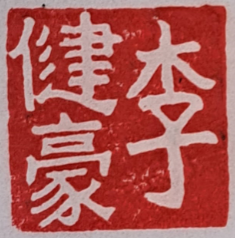I wonder what the graveyard of restaurants look like. Doing business anywhere is tough, and being greeted with shuttered storefronts, For Sale signs and [Permanently Closed] apologies on Google Maps feel like an acute reminder of how fleeting the culinary dimension can be. As someone who grew up in Singapore and Hong Kong, and spending time in Paris, London and New York, it feels like hypercompetitiveness real estate prices serve as an accelerant to supercharge the survival of the fitness, although financial ruthlessness and fickle consumer whims mean that even beloved institutions might come to their sudden end.
Christina Seid, second-generation owner of the Chinatown Ice Cream Factory, elucidates the hard work going into these businesses in an interview for the Community Oral History Project, complete with the background sounds of conversations in Cantonese and Mandopop playing. There, she argues that running a candy and ice cream story are low-prestige businesses, and the surprising transience of a clientele; “people love Chinese food”, despite the prestige of French cuisine, while the interview closes with the spectre of gentrification.1
But it is not just businesses that are threatened by commercial pressure. I am only able to access this archive through the Internet Archive’s Wayback Machine, providing a snapshot – for now – of the interview. Despite containing interviews with figures as prominent as photographer Corky Lee or Wilson Tang, the owner of Nom Wah, the Milstein Division’s librarian, Serena, confirms to me that the project was shelved for budgetary reasons, placing interviews ranging across Greenwich Village to Harlem ad Riverdale on ice.
Another early work of sociology into Chinatown’s restaurants is a NYU master’s thesis by Louis Chu, best known for his observations of single men in one of the first Chinese American novels, Eat a Bowl of Tea (1961). By 1938, the Chinese restaurant had become ubiquitous enough, a “commonplace institution, and as such, does not strike us as being particularly interesting … Many of us eat there. Some of us work there. Yet none of us know much about it”, creating the impetus for Chu to engage in his research.2
I am struck by Chu’s ability to grasp the city’s restaurants as an archive, and his mode of detailed, personal observation going so far as to work in a restaurant for one frustrating shift to observe wages, workplace hierarchies, and even restaurants’ refusal to serve black clientele, in sharp contrast to the 13 who have cited him largely as a trove of purely sociological observation. I wonder if my journal is destined for dusty obscurity too, amidst the ebb and flow of observations – millions of emigres from Fuzhou and Xiamen, thousands which must have ended up in Hong Kong and Singapore.
“The reader will find much narration. Such narration is essential, in the opinion of the author, in order to give the reader a significant picture, of, for example, the “rush hour”.” We also get a sense of a young Chu poring over the Department of Health’s files, discerning which restaurants were Chinese through their names and counting 447 Chinese restaurants out of 69,500 cards, of which Nom Wah is one of them.
This thesis narrowly escaped being pulped during a 1970s effort in NYU to clear out master’s theses from the library, and food historian Sarah Wassberg Johnson essentially provides us hearsay from her own NYU librarian friend:
“A young librarian had been hired specifically to dispose of the collection. One day, someone walked in off the street, pulled a typed thesis off the shelf, handed it to the that librarian, and said, “This is an extremely important work, please don’t throw it out,” and walked away. That librarian kept that thesis, and when she quit at the end of the depressing project, she passed it onto my friend, who tucked it way in his desk drawer. Almost a decade later, in the 1980s, he happened to be walking by the circulation desk when a “rookie librarian” was dealing with a request to see a Master’s thesis for the first time. “Isn’t that right? All the MA theses were thrown away?” she asked him. My librarian friend started to say, “Yes that’s right,” and then he looked at the index card the researcher had handed over, and added, “except for the one you are looking for, which is in my desk.”3
It is a story without much of a punchline: the thesis is successfully digitized, and both this text and Chu’s wider oeuvre lie in relative obscurity.
- “Chinatown Legacy Project | Christina Seid.” Accessed April 6, 2025. https://wayback.archive-it.org/14173/20200911183751mp_/http://oralhistory.nypl.org/interviews/christina-seid-x5gxsw. (07:00) ↩︎
- Chu, Louis. “The Chinese Restaurants in New York City.” Academic Dissertation, New York University, 1938, p.3.
↩︎ - Johnson, Sarah Wassberg. “The Unexpected Story of an Almost-Lost Thesis.” The Food Historian, April 6, 2021. http://www.thefoodhistorian.com/1/category/nyu. ↩︎

Leave a Reply